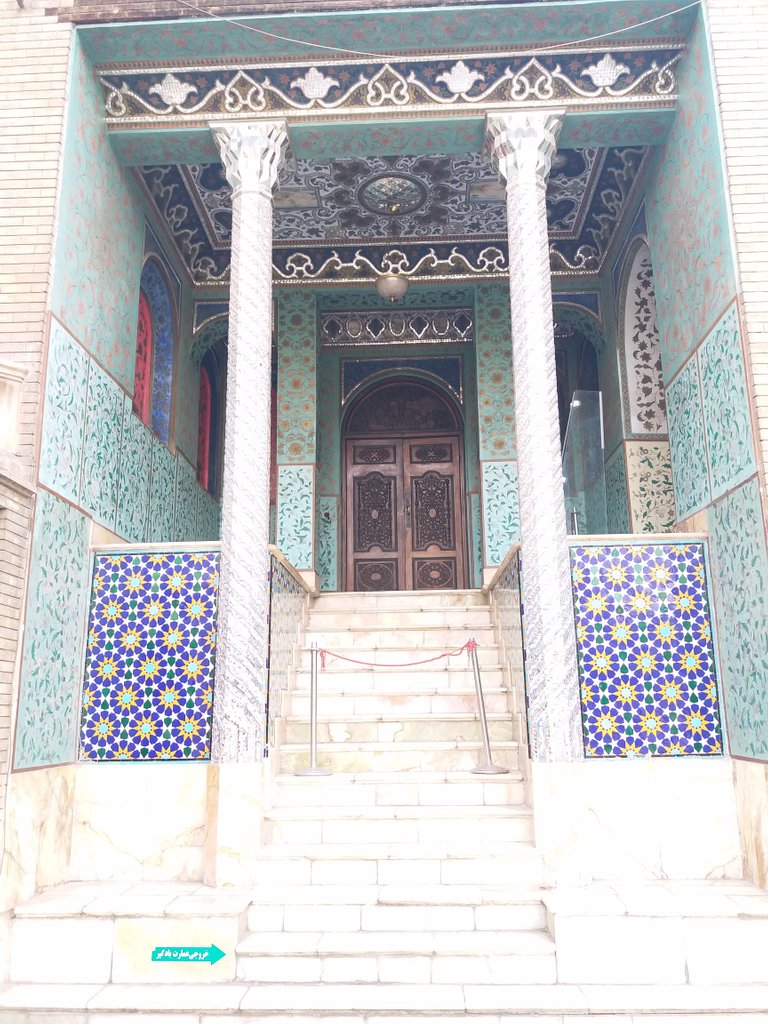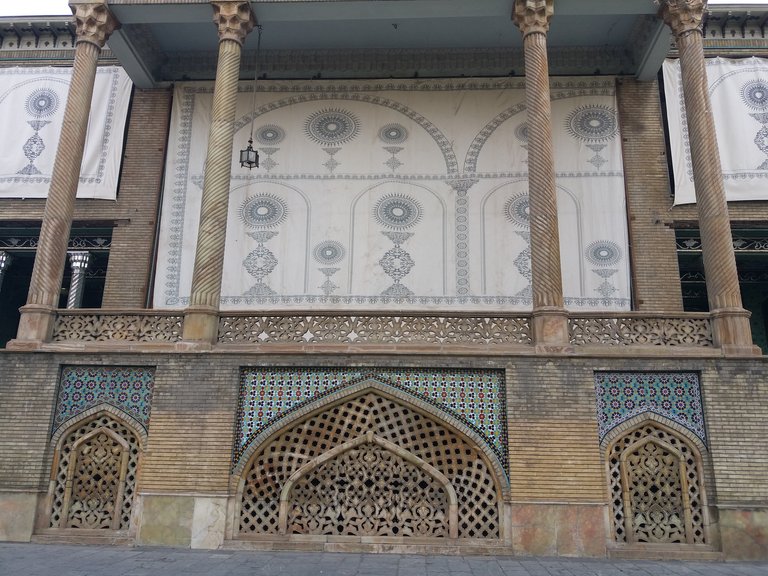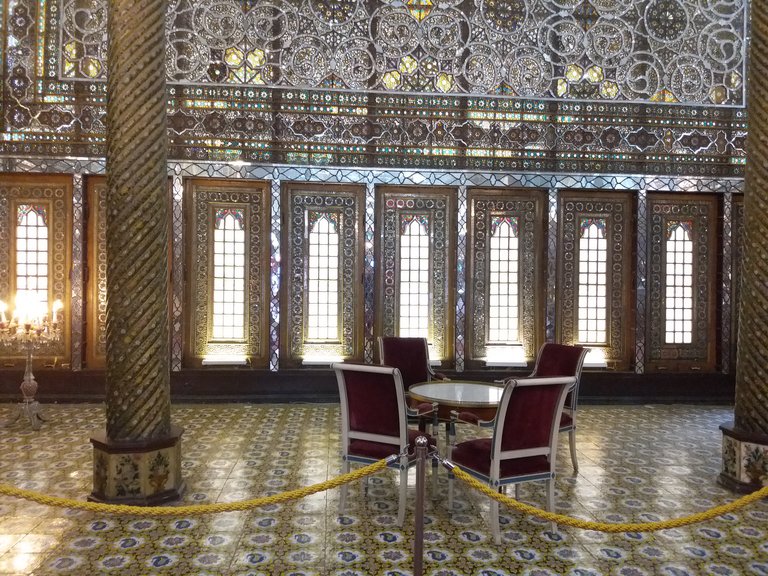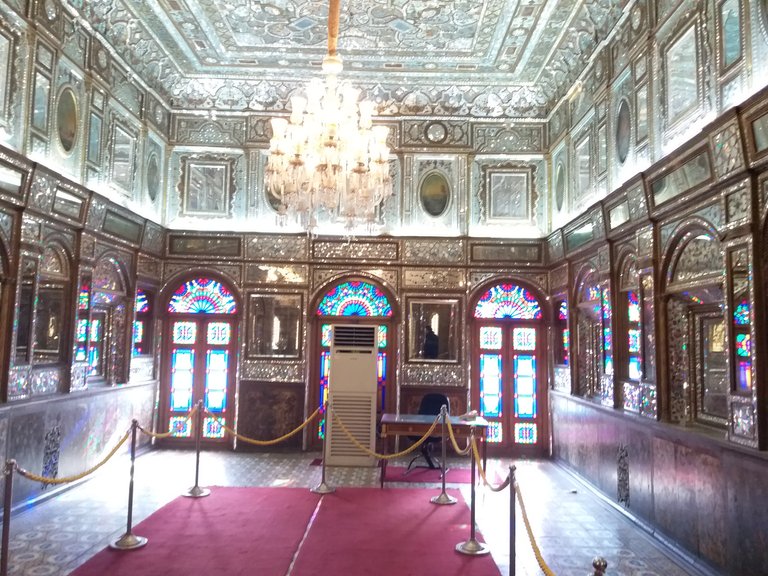
Emarat-e Badgir is one of the oldest building in Golestan palace. It was constructed during the reign of Fath Ali Shah, the second Qajar King(1797-1834). It is considered as the second building in Golestan palace.
Emarat-e Badgir comprises one royal Shah Neshin(seat hall), 2 side rooms, 2 vestibules and 1 Howz Khane(pond house), which now is used as Golestan palaces Aks Khane(Photo Gallery) and 4 wind catchers. The royal Shah Neshin(seat hall), being the main part of the building, has been decorated with 9 beautiful sash windows, other ornaments include 2 plaster spiral columns, painted in Zandie eras style, painted walls and ceilings with skillful and delicate mirror works and plaster works. Because of the existence of wind catchers in this building and its coolness in summer, it can be inferred that it has been used, mostly in hot months of the year.

Iranian architects such as Haji Mirza Jafar Khan-e Tabrizi, Abdoullah Khan-e Memarbashi know as Sheikh abd-ol Hosein have been involved in constructing this building from 1807 to 1188. Its painting have been done by famous artists Mirza Babaye Shirazi, Ostad Mohammad, Mirza Ashtiani and Ostad Mahmoud Khan.

Emarat-e Badgir underwent some renovations in Naser-ed Din Shah era, by architect Haji Ali Khan-e Hajib-ol Dowle and turned into its current from. Comparing 2 water color paintings by Mahmoud Khan Saba( Malak-ol Shoara) dating back to the years 1861-1864 and photos remained from Naseri era, the extent of performed changes can be realized. Regarding the most important attachments to the building, the addition of the terrace and columns and marble reticulations to the northern side of the builging, in the front view of Golestan Garden can be mentioned.
Mozafar-ed Din Shahs coronation in 1895 is onethe ,most important events in Emarat-e Badgir in which Takht-e Tavoos(Iranians famous jeweled peacock throne) has been used in four the coronations. The building underwent repairs again in Pahlavi era and was allocated to the settlement place of Royals office building.

In autumn of 2004, this building was repaired on the Golestan palace experts efforts and was opened for public visit.
Sort: Trending